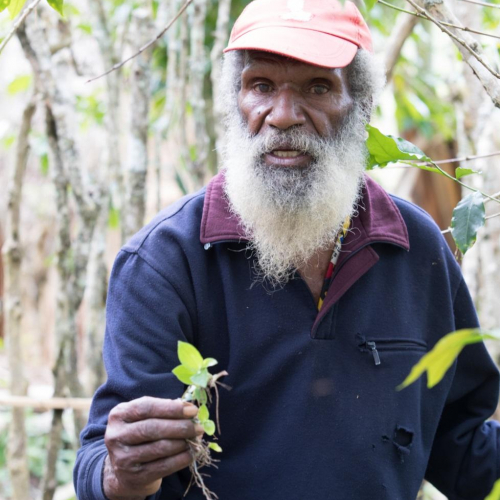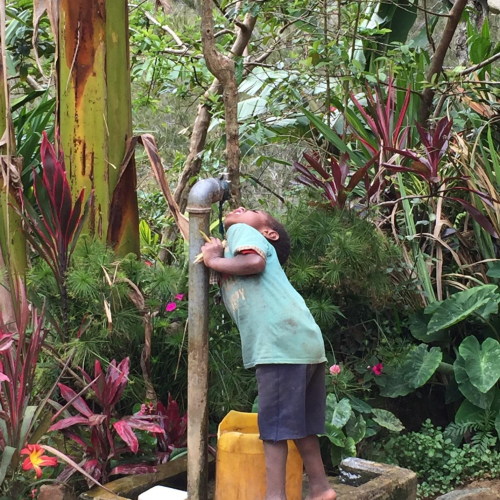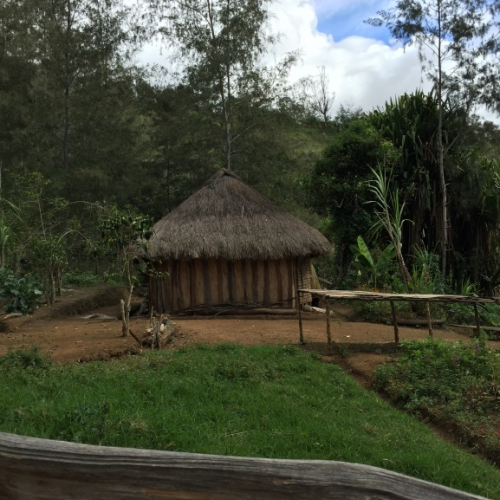Papua New Guinea
Did you know?
About
Papua New Guinea, in Australasia, covers the eastern half of New Guinea and includes many island groups. Papua New Guinea has a forested and mountainous interior, bordered by swampy plains and a tropical monsoon climate. Most of the working people are farmers. Timber, copra, coffee and cocoa are important but exports are dominated by minerals, chiefly copper and gold. The country depends on foreign aid, mainly from the former colonisers Australia and New Zealand.
Both Arabica and Robusta
Coffee is by far the most valuable of Papua New Guinea's agricultural export commodities, and its benefits are spread widely among rural people. It is estimated that there are about 240.000 small coffee farms, ranging in size from a few dozen trees to an acre or so, and these small, self-supporting farmers produce over 70% of the million-plus bags exported annually. The corporate or plantation sector of the industry produces the balance.
Jungle-clad PNG has suffered from political strife, perennial law and order problems since its independence in 1975. PNG produces almost entirely top quality Arabica, with gourmet categories accounting for 15-20 percent of the total coffee output. PNG gourmet coffee is best known with industry classification varying from super premium AAA grade through A, X, Y grades. The Nation's gourmet coffee production however has failed in the past to respond to rising demand as the number of plantations declined and roads worsened. Rampant looting of plantations is discouraging planters from making further inputs as they are not getting expected returns due to these frequent thefts.
Organic Coffee in PNG's Highlands
Organic coffee is stated by some as a fashion, a fad, the flavour of the month. In the highlands of Papua New Guinea (PNG), however, the concept is taken very seriously. It is viewed as the way of the future. Organised farming, as opposed to hunting and gathering, has a long history in the big valleys of PNG's highlands. In some areas, archaeological investigations reveal that complex systems of drainage and irrigation ditches existed already as long ago as 4000 B.C. No modern day proponent of organic farming can fail but to be intrigued by this very large group of people, who, until recently, were totally bypassed by the evolution of western culture and technology, still subsist wholly upon a totally natural system of agriculture.
Apart from the introduction of steel tools and new varieties of vegetables and fruits, the highland farmer of PNG lives and works today using the same successful cultural methods, the same methods of composting, draining, mounding and soil-conservation, as his distant ancestors did in prehistoric times. These practices are a copy book version of those set as objectives by today's emergent organic farming movement.
By far, the major part of PNG's annual crop of coffee is produced by the village based small farmers of the highlands. And by far, the major proportion of this, is produced from the traditional bourbon and typical varieties of Arabica, although arusha was introduced in the 1960's. These coffees from the highlands may be characterised as having medium body, medium acidity and with an unique light, winey character of their own. Caffeine content is medium to low. Small quantities of a good washed Robusta are also produced by villagers in several coastal districts.
Nowhere among these traditional farming communities are pesticides, fungicides, or indeed inorganic fertilizers used. There is no need to. Coffee rust is the only serious coffee disease in PNG, and luckily the virulence of the strains present is not great. Many of the Arabica growing areas are at altitudes where ambient temperatures and humidity levels are such that they provide a shield against rust, rather than harbour it.
The formalities surrounding the gaining of acceptance by the various certifying agencies which govern sustainable agriculture around the world are complex and voluminous. Nevertheless, already in PNG, there are a number of certified farms and plantations, as well as certified mills and warehouses in operation. To date, the volumes of certified organic coffees exported from PNG have been small, but the trend is growing and is being supported by both the exporters concerned as well as the coffee Industry.
Nice to know
Papua New-Guinea produces approximately 60.000 bags of robusta per year.
Coffee facts
Crop Periods
Flowering Period |
|
Main : August to September |
Harvesting Period |
|
Main : From April until August |
Shipping Period |
|
Main : June until November |
Transit Days
|
Port of Shipment |
Imp. |
EU |
US |
|
Lae |
95% |
49 |
42 |
|
Medang |
3% |
52 |
45 |
|
Wewak |
2% |
40 |
46 |
Destination countries
1. Germany
2. Australia
3. Japan, South Korea, United States and UK
ICO Figures
Classifications
By region
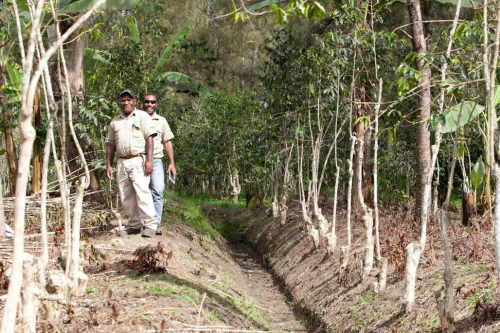
Plantations and the larger estates produce about 25 percent of the total crop, while around 10 percent is produced by intermediate size holdings or "blocks" of between 10 and 20 hectares. The Arabica coffee produced on these estates are considered among the finest gourmet coffees in the world. There are 76 registered plantations and estates in Papua New Guinea, and some of the greatest include names like Sigri, Arona Valley, Gumanch and Tremearne.
By Grade Types
Two species of coffee are grown and processed in Papua New Guinea; Arabica Coffee (coffea arabica) which is generally grown at altitudes of 1000m and more while Robusta Coffee (coffea canephora) is grown in the lowlands.
Class 1 Arabica parchment
Clean, sound, pale, even coloured Arabica parchment, which is substantially free of visible defects, has no off odours and is capable of yielding either “A” or “B” grade green bean.
Class 2 Arabica parchment
Clean, sound, pale coloured Arabica parchment, which has some visible defects and is capable of yielding “Y” grade green bean
Class 3 Arabica parchment
Arabica parchment which does not have an excessive amount of visible defects and is capable of yielding “Y2” grade green bean.
Class 1 Robusta parchment
Clean, sound, pale, even coloured Robusta parchment which is substantially free of visible defects and is capable of yielding “R1” grade green bean.
Class 2 Robusta parchment
Robusta parchment, which does not have an excessive amount of visible defects and is capable of yielding “R2” grade green bean.
By grades
Green Coffee Specifications - Arabica
|
OLD GRADE |
NEW GRADE |
DEFECTS |
CUP QUALITY |
|
Plantation A |
A - 16 |
10 |
Full, reasonably balanced, uniform, clean cup, well pronounced body and acidity, rich and distinct fragrance and aroma. |
|
Plantation A |
A - 17 |
10 |
Full, reasonably balanced, uniform, clean cup, well pronounced body and acidity, rich and distinct fragrance and aroma. |
|
Plantation AX |
A |
10 |
Full, reasonably balanced, uniform, clean cup, well pronounced body and acidity, rich and distinct fragrance and aroma. |
|
Plantation Bea Perry (PB) |
A - 11 |
10 |
Full, reasonably balanced, uniform, clean cup, well pronounced body and acidity, rich and distinct fragrance and aroma. |
|
PSC-X |
BM |
30 |
Regular, uniform clean cup, medium to high acidity and pronounced body, rich fragrance and aroma. |
|
PSC-AX |
BM - 15 | 30 | Regular, uniform clean cup, medium to high acidity and pronounced body, rich fragrance and aroma. |
|
PSC-A |
BM - 17 |
30 |
Regular, uniform clean cup, medium to high acidity and pronounced body, rich fragrance and aroma. |
|
Y1 Grade |
Y |
70 |
May lack some uniformity in the cup. Good acidity and body; some fruit or wine character,good fragrance and aroma. |
|
Y2 Grade |
Y2 |
150 |
Irregular cup profile, fair acidity and body, no foul or foreign flavour. |
|
Y3 Grade |
Y3 |
30% defects by weight, excluding good nipped beans. No foreign matter. Shall be fit for human consumption |
No foul or foreign flavour. |
(*) Bean size : If a specific screen size is designated the coffee shall be uniform in size above designated screen size. No suffix means the coffee is mixed size
Green Coffee Specifications - Robusta
|
Grade |
Bean size (screen size) |
total defect |
bean shape |
raw bean colour |
odour |
roasting aspect |
cup quality |
|
FAQ |
mixed |
substantially free of defects |
mixed shape |
green |
clean |
mixed |
neutral no off flavour |
|
T |
mixed |
no more than 30 or 3% by weight per kg or foreign matter - husk or hull |
mixed shape |
brownish green |
no foul or foreign odour |
mixed |
no foul or foreign flavour |
By screensize
| Screen no | Screen diameter | ISO norm |
|---|---|---|
| 20 | 7.94 | 8.00 |
| 19 | 7.54 | 7.5 |
| 18 | 7.14 | 7.10 |
| 17 | 6.75 | 6.70 |
| 16 | 6.35 | 6.30 |
| 15 | 5.95 | 6.00 |
| 14 | 5.55 | 5.6 |
| PB (11-14) |
4.37 to 5.55 (single bean/ round shape) |
4.40 to 5.60 |
* Displayed as a Suffix to the designated grade, A-20. If a specific screen size is designated the coffee shall be uniform in size above designated screen size means the coffee is mixed size.
By Defects for parchment delivered at mill level
CIC Premium Smallholder Coffee (PSC) classification grades for coffees delivered to the mills
As part of the continuing efforts to improve the quality of the smallholder coffee produced, the Coffee Industry Corporation (CIC) introduced quality standards for parchment coffee in 1993. All parchment delivered to factories for processing into green bean is automatically graded into one of four following grades :
|
Class 1 |
Premium Grade | Maximum 12 defects per 100 gr. |
|
Class 2 |
Above Average Grade | Maximum 35 defects per 100 gr. |
|
Class 3 |
FAQ Quality Grade | Maximum 70 defects per 100 gr. |
|
Class 4 |
Rejected Grade | More than 70 defects per 100 gr. |
*Parchment coffee defects are defined as parchment coffee which is not normal in physical appearance, including beans damaged by nature, insects or processing; pods; cherry skins or pulp and husks.
Grading coffee in this way has enabled the Corporation to look more closely at the grading structure and in particular at the Y grade, which continues to account for a very large percentage of the country's exports. The new classification method was added after the Corporation identified a number of buyers who indicated that they like the winey liquoring characteristics of the Y grade but wanted a coffee quality which was similar to an estate coffee such as the X grade.
An entirely new grade has therefore been created to satisfy this demand, called PSC or Premium Smallholder Coffee. PSC is the green bean grade representing milled class 1 smallholder parchment, the quality which is similar to plantation grades. The PSC standard, however, does allow a certain fruitiness, with the odour and a level of wineyness in the liquor which would not be permitted in estate coffees. For those who have been wary of Papua New Guinea small holder coffees because of the variability of the Y grade, PSC is a dynamic development that guarantees a high quality coffee with unique liquoring characteristics. It marks an innovative approach to a challenging market situation, typical of Papua New Guinea.
Typical Description
PNG Plantation Y-grade
Note about flavours
No foul or foreign flavour and odours relates to phenolic, engine oil, excessive mould and other similar chemical off flavous/odours. Grades A & B allowable defects shall be "secondary or category 2 defects".
Processing
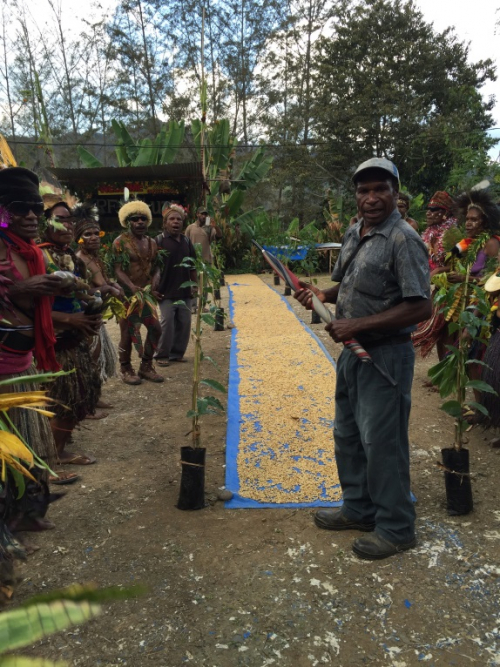
|
Picking
|
selectively by hand |
|
Washing |
wet method for Arabica and Robusta |
|
Fermentation |
for top grades: 3 x 24 h with washing every 24h |
|
Drying |
In the Sun |
|
Sorting |
Electronic, finished sometimes by hand-picking for the higher grades. |
Coffee Environment
By Exporters
Since its inception, Papua New Guinea's coffee industry has been lightly regulated, operating on free enterprise principles. Rules are imposed in the form of annual registration for processors and exporters, procedures for the registration of sales contracts and mandatory quality standards. The Coffee Industry Act under which these rules are set out, is administered by the Coffee Industry Corp., which monitors exports and provides a factory inspection and quality assurance service. The corporation is not involved in trade, existing simply as a regulatory, research and farmer-advisory body.
Since its earliest days, the smallholder based sector of the industry has been highly competitive. Only certain regions which lack access roads do not attract many buyers. Here growers often just have to accept the price offered to them by a single buyer which is willing to operate out of such remote regions. In the major growing areas however the trade for hulled coffee is intense. Literally hundreds of small buyers operate during the harvest season, many usually from a base at the side of the road with a makeshift sign (announcing their presence and purpose) and a scale. Others, generally better organised and more experienced travel to various producing regions, using four wheel drive pick-up trucks, and bargain and buy coffee from farmers as they pass through. Many of the wealthier mobile buyers have, in recent years, begun to set up permanent town depots, generally at the main market or in some other central spot in one of the highland towns. In answer to this, many growers from outlying areas now actually prefer to bring their coffee to town to sell. This is usually achieved by flagging down a passing bus and piling several bags of coffee onto the roof. In town, where the depots cluster near the market, one can easily determine what the going price of coffee is and sell to the highest bidder. This is never so easy out in the villages or at the roadside where smooth talking buyers may swing the deal very much in their own favour.
All this translates into fierce competition for the farmer's product which enables them, if well organised , to obtain 80% or more of the ruling export or FOB price. In this situation, with much competition and small margins, the pressure is very much on the middle man rather than on the grower to make enough money to stay in business. The downside of this, since regulating roadside trade in any meaningful way is almost impossible, is that there is always a buyer for whatever quality and this creates a market where farmers may lose the incentive of producing a better product. Ultimately penalties for substandard quality will be applied at the door of the factory by its operator with no involvement from the regulator.
Recognising the situation, the Coffee Industry Corporation has developed a comprehensive, proactive farmer training package within which there is an emphasis on quality control by means of selective harvesting and proper preparation methods of dry parchment coffee. Just as in any group of people, though, there are "adopters" and "non-adopters" among the farmers and although this package continues to see positive results, the change is very slow. The CIC also addressed the problem by developing a set of standards for classifying dry parchment coffee to be used by the processing and exporting sector. The same was done for cherry classification as these are also traded in some areas. Both the cherry and parchment classification standard are publicised using wall charts and leaflets in which the various classes of product are depicted in very accurate colour photographs. Every registered factory is obligated to display the wall charts at each of its buying points, and many tens of thousands of leaflets have been distributed in campaigns aimed at growers and roadside buyers. Since it is generally felt that any other means of price control or creation of a central marketing control body would be counterproductive in terms of financial result for the grower, the buyers and sellers are simply aided in classifying coffee all while being left to arrive at a fair price, voluntarily. The cherry and parchment standards do not have any real legal force except for the Minimum standard for Unprocessed Coffee which must be respected. It is forbidden by law to buy or sell coffee which is below this standard, and heavy penalties are foreseen in the CIC Act for either buyers or sellers dealing in these coffees.
96% of all coffee produced in PNG is exported through the port city of Lae. Here all exported coffee shipments are checked individually by CIC's Quality Assurance Laboratory.


